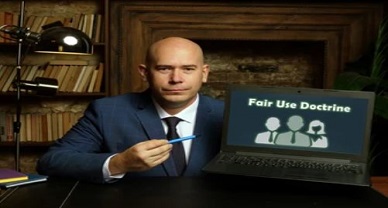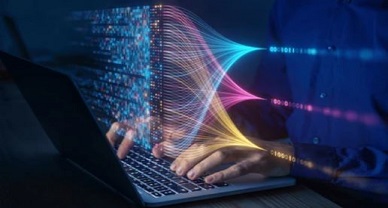Controlled Digital Lending: A Copyright Analysis
Introduction
Controlled Digital Lending (“CDL”) in context of book lending became a buzzword during the pandemic period when the physical access of libraries was not possible. The libraries use this concept of CDL justify the mass digitalization of copyright works digital versions of their legally obtained items and lending them to patrons in a controlled manner. With CDL, libraries maintain a balanced ratio of owned copies to loaned copies (owned to loaned ratio), preventing unauthorized sharing and copying of the digital content. This rule covers lending digital copies of copyrighted works, while works in the public domain can be freely digitized. Libraries can choose between digital or physical formats for lending, and they can only lend the same number of copies they had before digitalization. CDL offers a way to lend books in a different format, helping those with disabilities, limited physical access, research needs, or digital content requirements.
The concept of CDL revolves around the idea of two major doctrines under Copyright law i.e. Doctrine of fair use and doctrine of exhaustion. However, the ambiguity as to the lawfulness of such mass digitalisation and controlled lending has attracted major debates in different jurisdictions. One needs to see on what principles libraries can justify CDL.
Doctrine of fair use
The concept of CDL has not been per se recognized under Copyright Act, 1957 (“Act”). However, the Doctrine of Fair Use is often claimed as an exception to prove the legality of CDL. Under Section 52 (1) (a) (i) of the Act, mentions that in case the work is used for ‘private or personal use, including research’ then it would not constitute copyright infringement. The scope of this provision has not be explored by Indian courts with respect to libraries. However, the apex court of Canada in case of CCH Canadian Ltd. v Law Society of Upper Canada, interpreted the research and personal usage with respect to libraries making copies. The court observed that since there were restrictions put in place by the respondent for copying materials, the library was acting ‘fairly’.
[Image Sources: Shutterstock]
Specifically talking about usage of copyright work for educational purpose, Section 52(1)(h) to 52(1)(j) provides a breathing space for libraries. For reference, the Delhi High Court in DU Photocopy case, held that “so long as the copying forms part of and arises out of course of instruction it would be in the course of instruction”, the photocopying of copyright material would not constitute infringement. Further Section 52(n) of the Act, allows a ‘non-commercial’ library to keep digital versions of books it already possesses in physical form for preservation. However, the position of law is still not clear with respect to the share and distribution of that digital copy.
Unlike Indian Copyright law, Section 108 of the US Copyright Act provides libraries and archives a conditional right to reproduce and distribute copyright works for preservation, inter-library loans and replacements for the purpose of private study, scholarship or research. However again it does not contain any provision which permits mass digitalization of copyright words and lending the e-copies of the same. Internet Archive (“IA”), a non-profit digital library, was claiming the same defense when sued by four renowned publishers for copyright infringement.[1] The court in this case observed that, for claiming the exception of fair use, there is a need of some minimal transformativeness in the process.[2] Mere assuring the owned to loaned ratio and mass digitalization does not protect the digital libraries from potential copyright suit. In contrast to the same, court in case against Google observed that scanning books for search and ‘snippet display’ (short extracts of books) was fair use as the same was transformative use and the these books were made available in a metadata-only view. However, court failed to address the issue of copying entire books for external use outside of libraries. The books which were in public domain were allowed to be read and downloaded by the patron.[3]
Doctrine of first sale
The Act deals with doctrine of first sale under Section 14(a) (ii) which grants the exclusive right to the copyright owner to “issue copies of work, not being copies already in circulation”. The libraries rely upon this doctrine for both reselling used books and lending books. However the problem arises during application of this doctrine in digital sphere. Since India does not have a set legal precedence on digital exhaustion for lending process, the phrase ‘copies already in circulation’ needs a wider interpretation to fulfil the purpose. However it might depend upon the type of services provided by the libraries as a balance needs to be created between the rights of copyright owner and libraries.
Although the law is not settled in Indian jurisdiction, CJEU in VOB v. Stichting Leenrecht mentioned that in certain cases lending e-book (‘one copy, one user’) can be considered similar to lending a physical book. But this is EU specific legislation i.e. rental and lending directive.[4]
Since Indian courts have yet not addressed the pressing issue of digital libraries and there is not legislative clarification on the same, the scope of doctrine of first sale remains ambiguous.
Recently, National Digital Library of India (“NDLI”) was launched by Ministry of Human Resource Development (“MHRD”), and managed by IIT Kharagpur.[5] This digital library also faced infringement issues when the famous film maker Satyajit Ray’s hand written notes were made available for free access though the NDLI portal[6]. The library had to shut down the services for a certain period of time after further violations. The digital sharing of copyrighted work has been facing major challenges and generated a fair share of controversy around the world and India is no exception.
Conclusion
As mentioned above Controlled Digital Lending has not been legally recognised by the Copyright Protection statutes. Certain amendments are required under the current laws to incorporate the idea of regulated digitalization of copyrighted work for a larger public interest. The digital libraries like IA and NDLI are the current need of the education sphere. Appropriate reforms are required to include concepts like CDL in our Copyright Protection laws. The idea of CDL would swing in between legal lending and piracy unless the law is not settled on this.
Author: Arya Sharma, in case of any queries please contact/write back to us at support@ipandlegalfilings.com or IP & Legal Filing
[1] Hachette Book Group, Inc. v. Internet Archive, 542 F.Supp. 1156 (2023).
[2] Campbell v. Acuff Rose Music, Inc., 510 U.S. (1994).
[3] Authors Guild Inc. v. HathiTrust 755 F.3d 87 (2d Cir. 2014).
[4] Vereniging Openbare Bibliotheken v. Stichting Leenrecht, C-174/15 (2016) avaiable at https://curia.europa.eu/jcms/upload/docs/application/pdf/2016-11/cp160123en.pdf.
[5] Joydeep Thaur, National Digital Library opens up its digital contents; builds COVID-19 research repository, HINDUSTAN TIMES, https://www.hindustantimes.com/education/national-digital-library-opens-up-its-digital-contents-builds-covid-19-research-repository/story-36M8asvDd9GSMiKXTMDN4H.html.
[6] NDLU Project Website, National Library day Launch: Public Consultation of India’s First Copyright Guide for Indian Libraries, https://ndlproject.iitkgp.ac.in/copyright-guide-indian-libraries.



